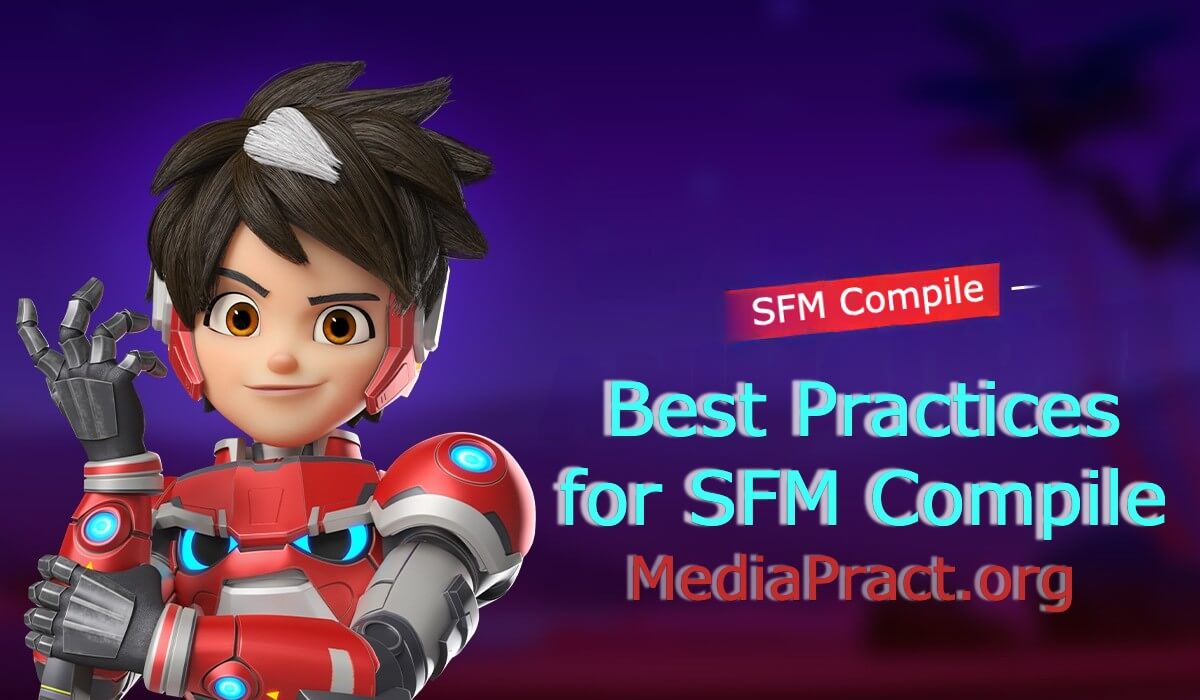Introduction to SFM Compile
Are you diving into the world of animation with Source Filmmaker (SFM)? If so, you’re in for an exciting journey. SFM Compile is a powerful tool that can transform your creative ideas into stunning visual stories. Whether you’re crafting short films or intricate animations, mastering SFM Compile will elevate your projects to new heights.
Animation isn’t just about creating movement; it’s about bringing characters and narratives to life. With the right techniques and tools at your disposal, you’ll find that perfecting your workflows becomes effortless. In this blog post, we’ll explore everything from understanding keyframes to streamlining processes and collaborating effectively with fellow animators. Get ready to unlock the full potential of SFM Compile!
Understanding the Basics: Keyframes and Timing
Keyframes are the building blocks of animation in SFM. They define critical points in your timeline, allowing for smooth transitions between poses and movements. By strategically placing keyframes, you can control how an object or character behaves over time.
Timing is equally essential. It determines the speed and flow of animations. A well-timed transition can evoke emotion, while poor timing may lead to awkward movement that feels unnatural.
Experimenting with different intervals between keyframes helps find a balance that suits your project’s style. This flexibility allows animators to express creativity more freely.
Be mindful of easing techniques as well; they add realism by adjusting the acceleration and deceleration of movement. Mastering these basics will significantly enhance your workflow in SFM Compile, setting a solid foundation for more complex animations down the line.
Utilizing Tools and Plugins to Enhance Workflows
The world of animation is ever-evolving, and utilizing the right tools can make a significant difference. When working with SFM Compile, consider exploring plugins that enhance your workflow efficiency.
Plugins such as “SFM Tools” can provide additional functionality. They streamline processes like importing models or adjusting lighting effects. These enhancements save time and allow for greater creative freedom.
Another valuable tool is the use of asset libraries. By organizing resources efficiently, you reduce clutter in your workspace. This makes locating necessary assets quicker and easier during intense production sessions.
Don’t overlook community-driven tools either. The SFM community regularly develops scripts that automate repetitive tasks—allowing you to focus on what truly matters: storytelling through animation.
Experimentation with various tools will help identify what best fits your style and project needs. Embrace technology to elevate your animation projects to new heights.
Tips for Streamlining the Process
Streamlining your SFM compile process can save time and enhance creativity. Start by organizing your assets clearly. Use folders for models, textures, and animations to avoid clutter.
Next, familiarize yourself with keyboard shortcuts. These can drastically reduce the time spent on repetitive tasks. The quicker you access tools, the more efficient your workflow becomes.
Consider creating templates for common projects. This provides a solid foundation to build upon and cuts down on setup time.
Regularly back up your work too. Losing progress due to technical issues can be frustrating and counterproductive.
Don’t hesitate to experiment with different settings in SFM. Discovering new features or adjusting preferences may lead you to unexpected efficiencies that suit your style perfectly.
Collaborating with Others in Animation Projects
Collaboration can elevate an animation project to new heights. When you bring together diverse talents, creativity flourishes.
Start by defining roles clearly; this helps everyone know their responsibilities. Use tools like Google Drive or Trello to keep track of progress and share assets seamlessly.
Regular check-ins are essential for staying aligned on creative direction. They allow team members to voice ideas, concerns, and feedback early in the process.
Embrace different perspectives—sometimes an outsider’s view can spark innovative solutions that you might overlook alone.
Communication is key. Utilize chat platforms such as Discord or Slack for quick discussions and updates.
Celebrate milestones together! Recognizing achievements fosters a positive environment where collaboration thrives and motivates the entire team toward shared goals.
Common Challenges and How to Overcome Them
Animation with SFM Compile can be a rewarding experience, but it comes with its own set of challenges. One common issue is managing complex scenes. As your project grows, keeping track of every element becomes difficult.
To combat this, organization is key. Label your layers and use folders to group similar elements. This way, you can navigate through your work more efficiently.
Another hurdle is rendering times that seem endless. Optimize your settings by lowering the resolution during previews. This saves time while allowing you to focus on refining animations.
Additionally, software crashes can disrupt flow and creativity. Regularly save versions of your project to minimize loss in case something goes wrong.
Receiving constructive feedback might feel daunting at first. Embrace criticism as an opportunity for growth rather than a setback. Engaging with peers often reveals fresh perspectives that enhance your work.
Staying Updated on Industry Trends and Techniques
The animation industry is constantly evolving. Staying ahead of the curve requires a keen eye for emerging trends and new techniques.
Follow influential animators on social media platforms. Their insights can provide valuable inspiration and practical tips.
Participate in online forums and communities dedicated to SFM. Engaging with peers helps you learn about innovative workflows and tools firsthand.
Webinars, workshops, and tutorials are excellent resources as well. They often showcase cutting-edge methods that can enhance your projects significantly.
Don’t forget to explore animation festivals or exhibitions, either virtually or in person. Such events offer a wealth of knowledge from industry leaders and innovators alike.
Consider subscribing to relevant newsletters or channels that focus on animation technology. This way, you’ll receive updates directly in your inbox, keeping you informed without extra effort.
Conclusion: The Importance of Continuous Improvement in Animation Workflows
The animation landscape is constantly evolving. For artists using SFM, staying ahead means embracing change and refining your workflows. Continuous improvement isn’t just a buzzword; it’s essential for maximizing efficiency.
Regularly assessing your processes can lead to better project outcomes. Embrace new tools and techniques as they emerge in the industry. Collaborate with peers to gain fresh perspectives that enhance your work.
Remember, every animated piece you create contributes to your growth as an artist. By adopting a mindset of continuous learning, you’ll not only improve your skills but also elevate the quality of your animations over time. The journey is ongoing, and each iteration brings you closer to mastery in SFM compile workflows.

















